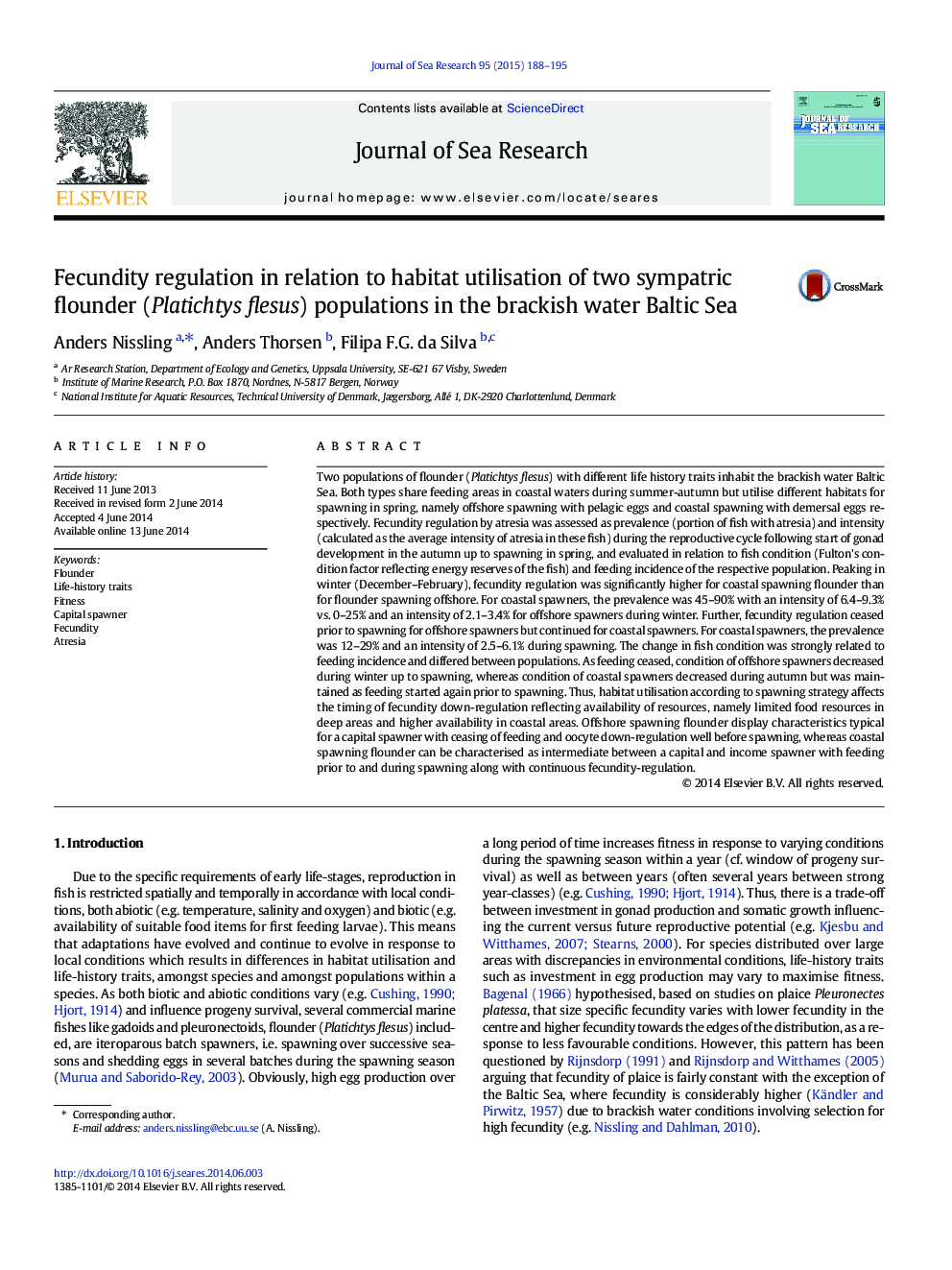| کد مقاله | کد نشریه | سال انتشار | مقاله انگلیسی | نسخه تمام متن |
|---|---|---|---|---|
| 4549760 | 1627479 | 2015 | 8 صفحه PDF | دانلود رایگان |

• Higher occurrence of atresia in coastal- vs. offshore spawning flounder
• Timing of fecundity regulation differed between populations reflecting fish condition
• Feeding and fish condition differed between populations reflecting habitat utilisation
• Offshore spawners represent a typical capital spawner and coastal spawners intermediate between a capital and income spawner
Two populations of flounder (Platichtys flesus) with different life history traits inhabit the brackish water Baltic Sea. Both types share feeding areas in coastal waters during summer-autumn but utilise different habitats for spawning in spring, namely offshore spawning with pelagic eggs and coastal spawning with demersal eggs respectively. Fecundity regulation by atresia was assessed as prevalence (portion of fish with atresia) and intensity (calculated as the average intensity of atresia in these fish) during the reproductive cycle following start of gonad development in the autumn up to spawning in spring, and evaluated in relation to fish condition (Fulton's condition factor reflecting energy reserves of the fish) and feeding incidence of the respective population. Peaking in winter (December–February), fecundity regulation was significantly higher for coastal spawning flounder than for flounder spawning offshore. For coastal spawners, the prevalence was 45–90% with an intensity of 6.4–9.3% vs. 0–25% and an intensity of 2.1–3.4% for offshore spawners during winter. Further, fecundity regulation ceased prior to spawning for offshore spawners but continued for coastal spawners. For coastal spawners, the prevalence was 12–29% and an intensity of 2.5–6.1% during spawning. The change in fish condition was strongly related to feeding incidence and differed between populations. As feeding ceased, condition of offshore spawners decreased during winter up to spawning, whereas condition of coastal spawners decreased during autumn but was maintained as feeding started again prior to spawning. Thus, habitat utilisation according to spawning strategy affects the timing of fecundity down-regulation reflecting availability of resources, namely limited food resources in deep areas and higher availability in coastal areas. Offshore spawning flounder display characteristics typical for a capital spawner with ceasing of feeding and oocyte down-regulation well before spawning, whereas coastal spawning flounder can be characterised as intermediate between a capital and income spawner with feeding prior to and during spawning along with continuous fecundity-regulation.
Journal: Journal of Sea Research - Volume 95, January 2015, Pages 188–195